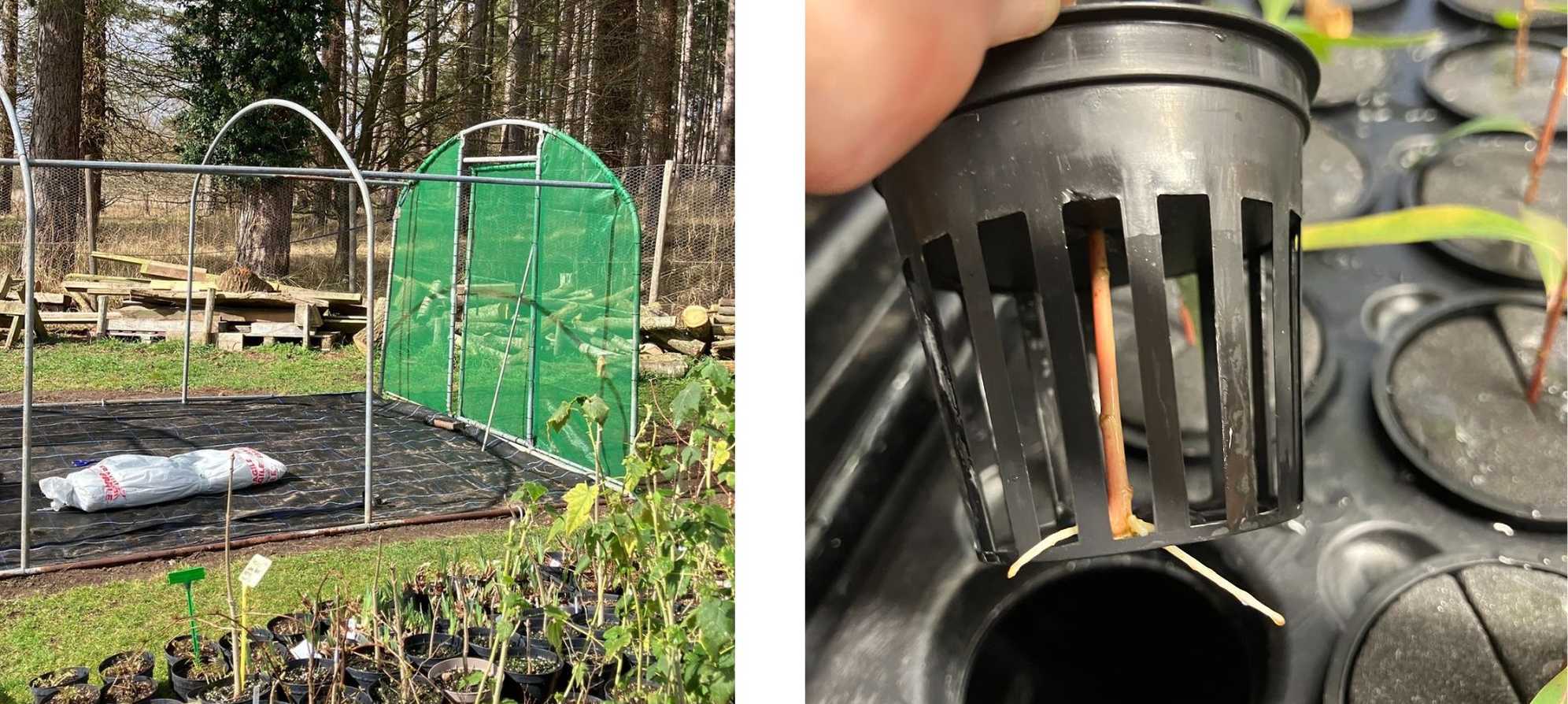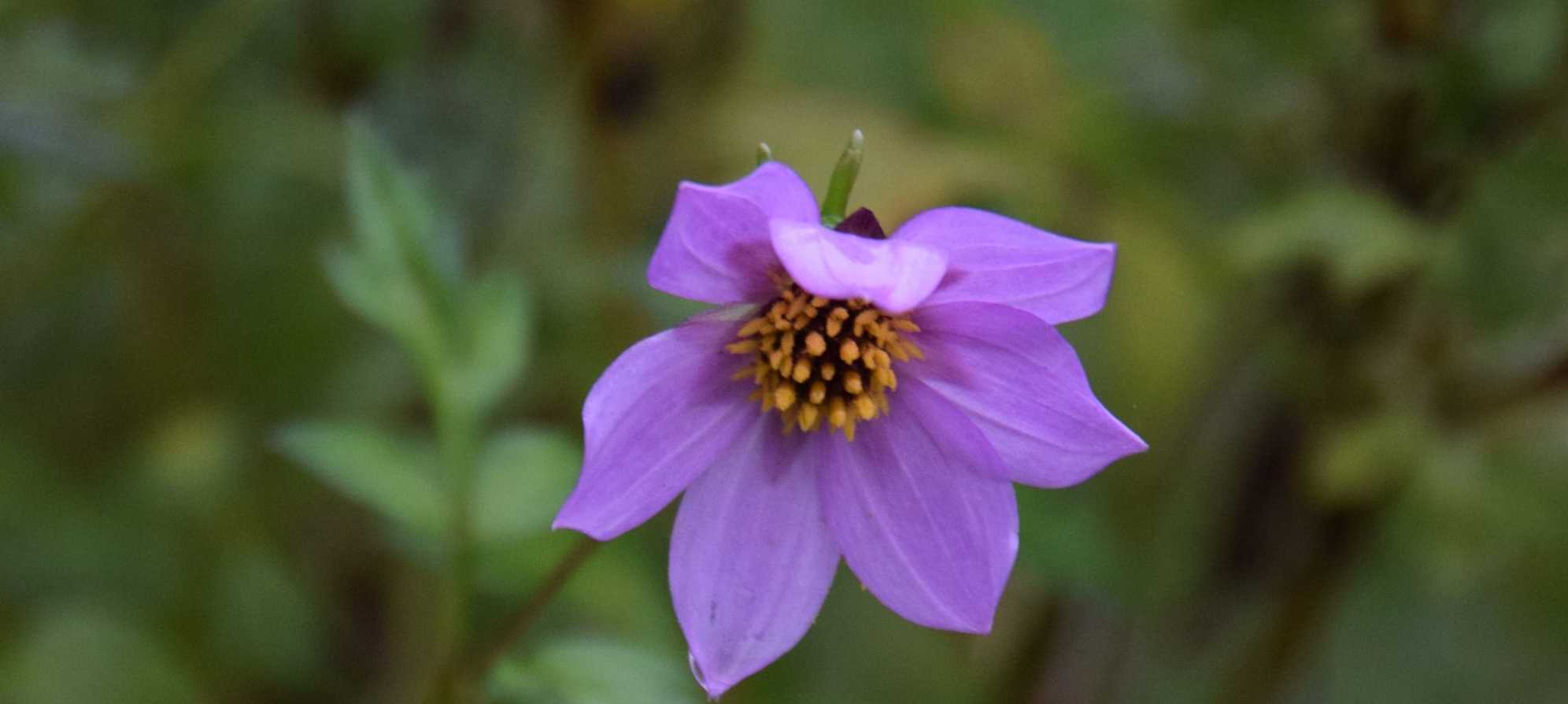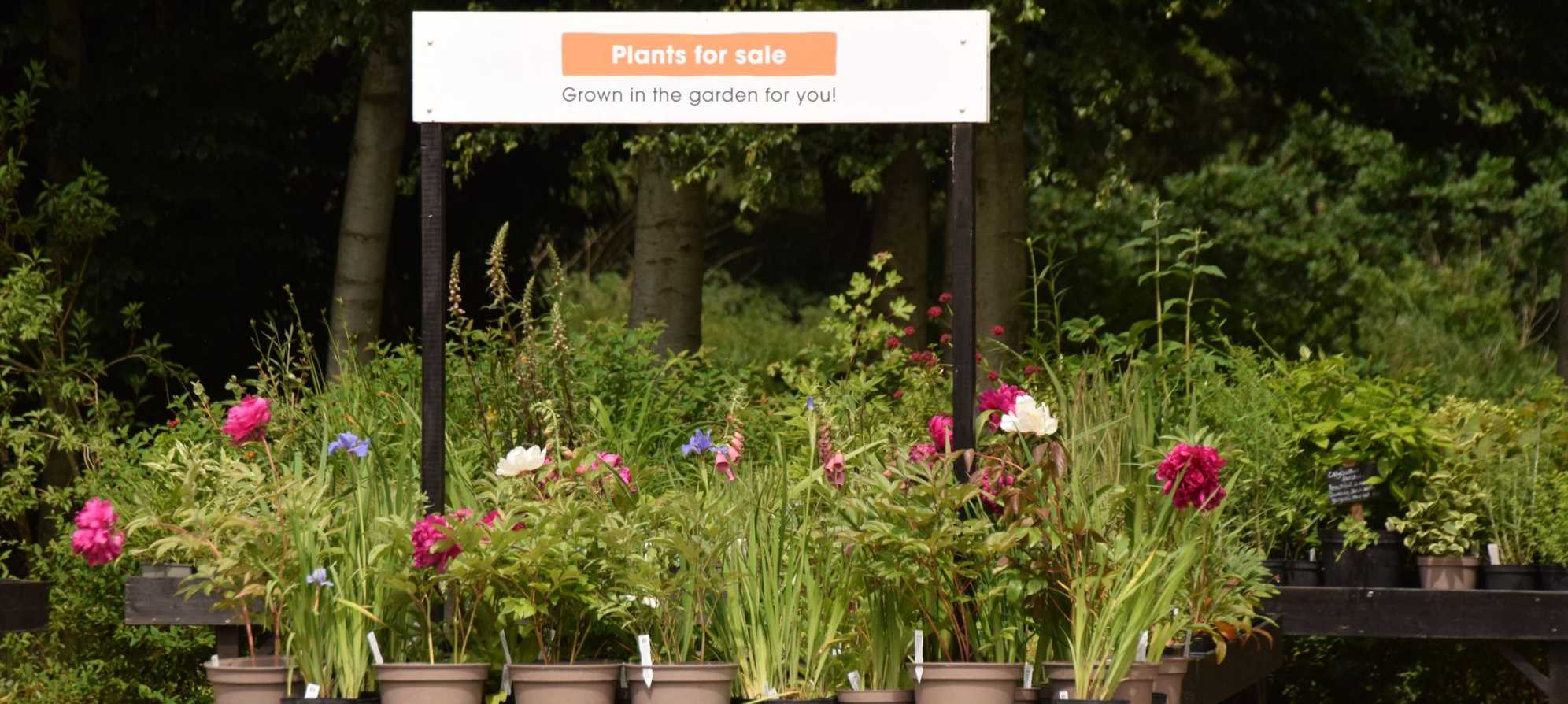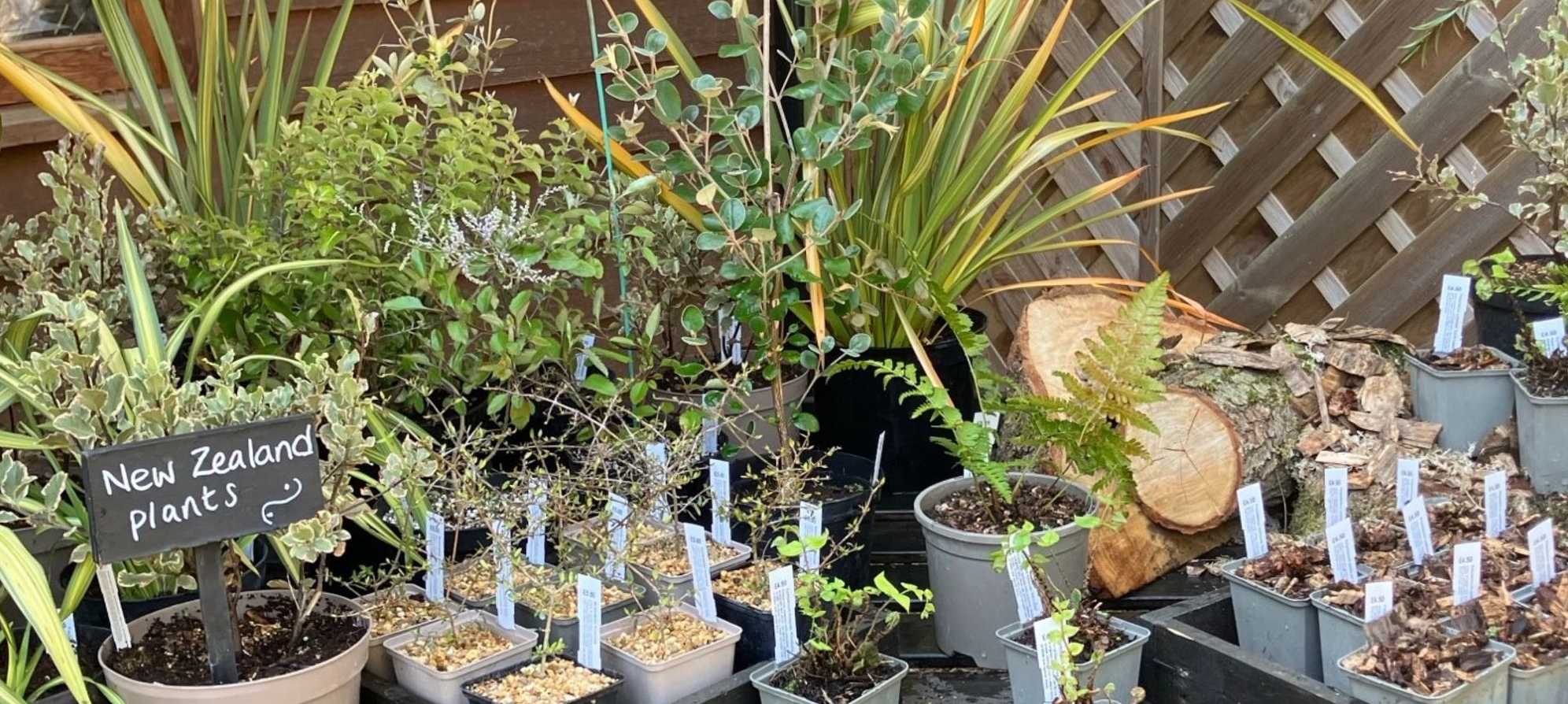Nursery Assistant Heather Medcraft shares the story of her journey at Fullers Mill Garden
4 July 2025
6 min read
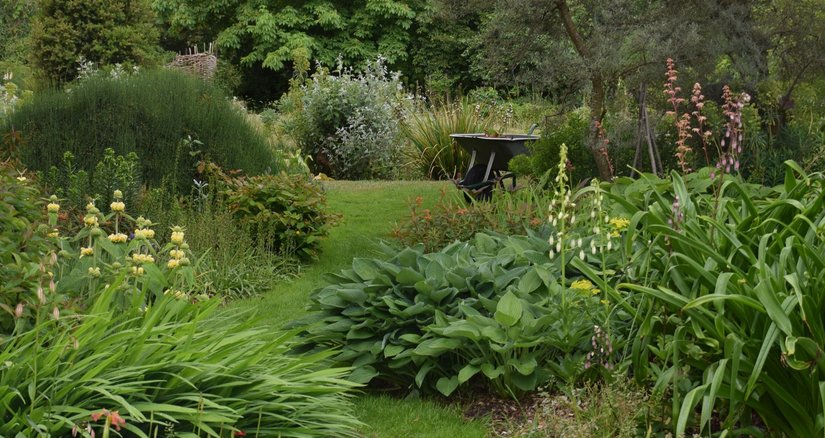
Fullers Mill Garden is a magical place and a plant lover’s paradise.
From the moment I walked through the gate 15 years ago I knew my mind would be blown. It has been a steep learning curve ever since. Specimens fill every corner of the garden. Each season, month and week there are new discoveries. More plants are being added all the time, some of which are almost forgotten from the year before. There are simply too many to remember. This makes working in this very special garden a unique job.
Working with Bernard
I had the pleasure of working with the late Bernard Tickner who, as you may already know, created the garden from rough scrubland, buying additional pockets of land to extend the garden to the seven acres it is today.
The summer of 2010 was hot and dry. Bernard had permission to draw water from the River Lark to irrigate the garden. At 86, he was still pulling huge hose reels round the garden to set sprinklers on plants that were suffering.
One of my jobs that summer was to stake the lilies - not one single lily had been staked, and I spent the next two weeks tying in every single one.
And then there were Bernard’s fritillaria - he had me carefully excavating these after they’d flowered to see if the bulbs had increased underground. A nerve-wracking task as they were so precious!
In those days, the gardeners were chasing their tails. We were all employed part time apart from the Head Gardener Neil Bradfield, and time was limited.
But in the winter of 2010, there was snow on the ground for three weeks and so no gardening. So, Bernard had us gardeners clearing the brash back on either side of the driveway in the forestry land. Two years later because the ground had been stirred up, foxglove seeds had been brought to the surface. In late spring 2012, we had the most breath-taking display of foxgloves in the forest up the drive.
Bernard was quite resistant to selling plants in the early days, and when I first started, there was one small trolley, containing some corydalis and tiarellas for the entire season. Neil very much wanted to extend the number of plants we were selling and eventually Bernard was persuaded that a polytunnel was needed. Jim Buttress by then had headed up the Garden Committee and suggested we get a Keder Greenhouse which we still have to this day. It has been a really excellent greenhouse, very well made but as most people who love to propagate find, there’s never enough room.
Propagation
Propagating plants for the nursery gives us the chance to share the joy of plant discovery with visitors.
Propagation is also extremely important for Bernard’s collection of unusual and rare species. We are working on reproducing what we can of some of the plants that are irreplaceable. This ensures that the garden remains unique whilst continuing to build the collection.
New and unusual plants grown from seed and acquisitions from other plantspeople, that are in keeping with the garden, are planted by the team ensuring the garden continues to evolve.
We can’t possibly propagate everything we have here, but we do try to grow key plants that are the standout ‘Fullers Mill Gems’.
Fullers Mill Gems
By Fullers Mill Gems I mean those plants that always seem to stand out for visitors and us gardeners. I suppose seeing something that we really like in the garden probably means that most of our visitors will too.
We are working on Bernard’s introductions - sssshhh not quite there yet but we are having a go!
The Benton irises are popular and Bernard had a connection with Cedric Morris, who produced at least 90 named varieties of iris. So ‘Nigel’, ‘Lorna’, ‘Susan’ and ‘Dierdre’ are sold here.
Other plants include Eryngium bourgatii, Dahlia merckii, Ulmus x hollandica 'Jacqueline Hillier' and Spartium junceum, to name but a few.
My background
When I was 16, it was a toss-up between Youth Training Scheme (YTS) with Wyevale Garden Centre or catering college. After a few years working my way up in catering I had children. That changed everything really!
Both my mum and gran were a big influence horticulturally. Gran loved her garden and was always propagating African violets and other indoor plants. Mum also was a great gardener and got into growing and selling alpine plants a couple of years before she passed away unexpectedly at 40.
I decided that I would pursue the horticultural route when my children were small and took on an allotment and the RHS Level 2 course. I took on a part time role at a local nursery. Brian, my boss, had been in horticulture for nearly 40 years and was keen to pass on his knowledge. We grew young plants for Thompson & Morgan and Brian had a contract to grow perennials of all different kinds. The unfortunate thing was that we never saw them flower as they were all shipped off to Guernsey in those days.
We also planted lots of display pots and hanging baskets for Thompson & Morgan open days in Ipswich. So we got to see new varieties of some of the tender plants they were introducing before anyone else did.
Brian also opened to the general public twice a year for about six weeks and I helped with raising plants for hanging baskets and pot displays for spring and autumn. He also gave me some free greenhouse space where I grew alpines and did some plant fairs with them. Brian lost the contract with Thompson & Morgan and so couldn’t afford to employ me any more but we’ve remained great friends ever since.
After the nursery, I worked at a sheltered housing scheme, looking after a ¾ acre garden for the residents. I encouraged them to plant hanging baskets and grow plants for sale there. Funds were tight and to be able to purchase plants for display we had to raise money for them. We won some awards for Bury in Bloom a few years running.
After Orbit Housing I worked for a company in local private gardens. Then I saw the ad for Fullers Mill Garden, and here I am now!
For the last two years I have taken on the role of Nursery Assistant. I wasn’t doing very much of the propagating before that as my role was in the garden. I did however do the RHS Level 3 Propagation course with encouragement from HR who knew that I really loved the subject, and funding from Perennial, who own and manage the garden today.
Plant sales today
You will always find something different on the sales benches as stock is constantly changing - just like the garden plants. Displays change from plants suitable for shade and alpine areas through to tender plants at the front entrance to welcome everyone. Visitors can take home their own piece of Fullers Mill to remind them of their visit.
With the switch to peat free compost, we have also decided that where possible we will offer plants for sale in 9cm pots. These plants will establish quickly in your garden and require less watering whilst settling in. We will sometimes be able to have a stock plant on display to give visitors an idea of what the plant will look like. The 9cm plant pots can be returned for recycling and we will reuse them.
Stock plants are kept in Bernard’s vegetable garden, ensuring that we are using less water, compost and plastic to keep plants during the closed season.
The whole team here at Fullers Mill
are integral to the development of the nursery. The garden team and volunteers help to source material from the beds, take cuttings, split plants and identify seedlings.
Jude, one of our volunteers, is building the database of plants in the garden and is a massive help identifying Bernard’s collection for which labels have been long lost.
Lauren, our trainee, with a passion for houseplants, is sourcing plants to propagate and stock the Bothy Shop with.
The shop team ensure that purchases are well-packed, ready for the journey home to visitor’s gardens.
I’m loving my role as Nursery Assistant, increasing the number of plants we’re propagating and making available for our visitors, enabling them to take a small piece of Fullers Mill Garden home to their own garden.


